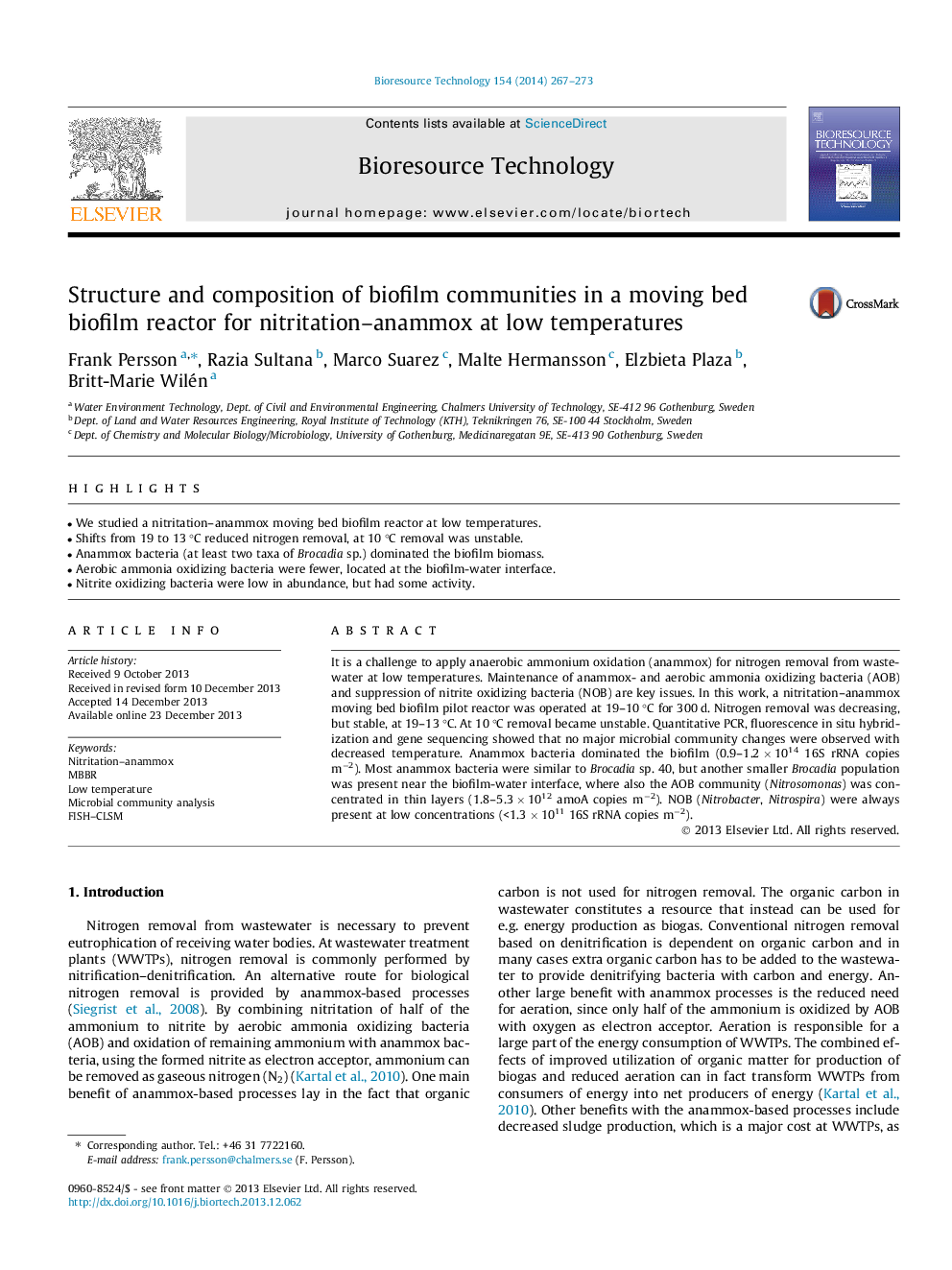| Article ID | Journal | Published Year | Pages | File Type |
|---|---|---|---|---|
| 7079036 | Bioresource Technology | 2014 | 7 Pages |
Abstract
It is a challenge to apply anaerobic ammonium oxidation (anammox) for nitrogen removal from wastewater at low temperatures. Maintenance of anammox- and aerobic ammonia oxidizing bacteria (AOB) and suppression of nitrite oxidizing bacteria (NOB) are key issues. In this work, a nitritation-anammox moving bed biofilm pilot reactor was operated at 19-10 °C for 300 d. Nitrogen removal was decreasing, but stable, at 19-13 °C. At 10 °C removal became unstable. Quantitative PCR, fluorescence in situ hybridization and gene sequencing showed that no major microbial community changes were observed with decreased temperature. Anammox bacteria dominated the biofilm (0.9-1.2 Ã 1014 16S rRNA copies mâ2). Most anammox bacteria were similar to Brocadia sp. 40, but another smaller Brocadia population was present near the biofilm-water interface, where also the AOB community (Nitrosomonas) was concentrated in thin layers (1.8-5.3 Ã 1012 amoA copies mâ2). NOB (Nitrobacter, Nitrospira) were always present at low concentrations (<1.3 Ã 1011 16S rRNA copies mâ2).
Related Topics
Physical Sciences and Engineering
Chemical Engineering
Process Chemistry and Technology
Authors
Frank Persson, Razia Sultana, Marco Suarez, Malte Hermansson, Elzbieta Plaza, Britt-Marie Wilén,
